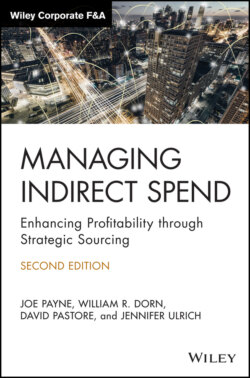Читать книгу Managing Indirect Spend - Joseph Payne, Joe Payne - Страница 45
Pricing Information
ОглавлениеOf course, pricing information is another important aspect of a contract or pricing agreement. While unit pricing is the most obvious pricing factor, contracts often include many other types of pricing:
Mechanisms for changing price. These could include an index‐based formulation linked directly to supplier raw material costs or a stipulation that prices will not exceed a certain percentage over a certain period of time.
Notification for price changes and guidelines for accepting or rejecting changes
Miscellaneous charges, such as freight or other servicing fees
Payment terms, including early payment discount and late payment fees
Discount or markup structures for goods and services not specifically unit‐priced in the agreement (such as noncore items for office supplies, or a tariff discount with AT&T or FedEx)
Taxes and surcharges, including how they are applied
Many other types of pricing information could be included in a contract or agreement, depending on the category. For example, a contract for print services might include tiered levels of pricing depending on the number of items printed in one order. We cover some of the other pricing information you can expect to see for specific categories in Chapter 7, “Get It in Writing: The Contracting Phase.”
As you can see, it is important to understand all aspects of pricing, beyond just the unit price. When the time comes to evaluate proposals from alternate suppliers, this information is critical for developing an apples‐to‐apples comparison.
